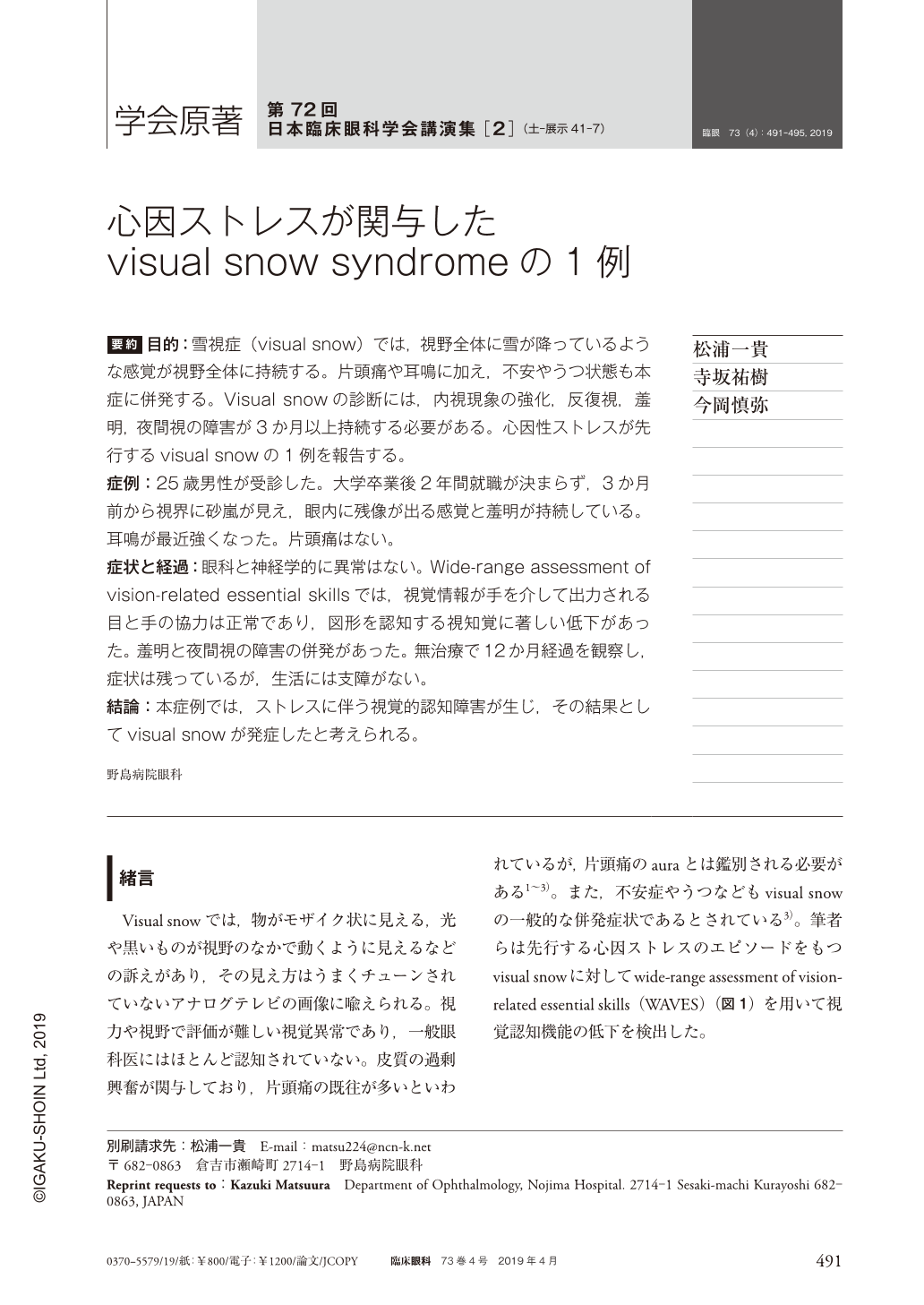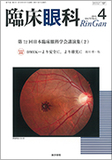Japanese
English
- 有料閲覧
- Abstract 文献概要
- 1ページ目 Look Inside
- 参考文献 Reference
要約 目的:雪視症(visual snow)では,視野全体に雪が降っているような感覚が視野全体に持続する。片頭痛や耳鳴に加え,不安やうつ状態も本症に併発する。Visual snowの診断には,内視現象の強化,反復視,羞明,夜間視の障害が3か月以上持続する必要がある。心因性ストレスが先行するvisual snowの1例を報告する。
症例:25歳男性が受診した。大学卒業後2年間就職が決まらず,3か月前から視界に砂嵐が見え,眼内に残像が出る感覚と羞明が持続している。耳鳴が最近強くなった。片頭痛はない。
症状と経過:眼科と神経学的に異常はない。Wide-range assessment of vision-related essential skillsでは,視覚情報が手を介して出力される目と手の協力は正常であり,図形を認知する視知覚に著しい低下があった。羞明と夜間視の障害の併発があった。無治療で12か月経過を観察し,症状は残っているが,生活には支障がない。
結論:本症例では,ストレスに伴う視覚的認知障害が生じ,その結果としてvisual snowが発症したと考えられる。
Abstract Purpose:Visual snow is characterized by persistent sensation of falling snow over the total visual area. In addition to migraine and tinnitus, anxiety or depression is an associated feature. Diagnosis is based on persistent photophobia, palinopia, entopsia, and impaired night vision for more than 3 months. We report a case of visual snow syndrome associated with psychological stress.
Case:A 25-year-old male visited us for advice. He remained jobless for 2 years after graduating a university. He had started seeing sandstorm since 3 months before. He felt persistent after-image and photophobia. He thought that his tinnitus had increased recently. No migraine was present.
Findings and Clinical Course:He was free of ophthalmological or neurological abnormalities. Wide-range assessment of vision-related essential skills(WAVES)showed normal eye-and-hand coordination, while he showed marked decline in visual perception. He was followed up for 12 months without medication. He has been doing well without difficulty in daily life.
Conclusion:Visual snow in the present case appears to have originated in visual cognitive function following stress in daily life.

Copyright © 2019, Igaku-Shoin Ltd. All rights reserved.


